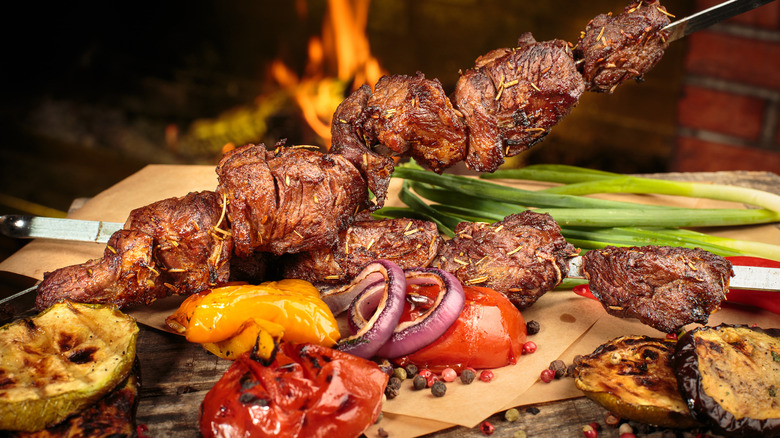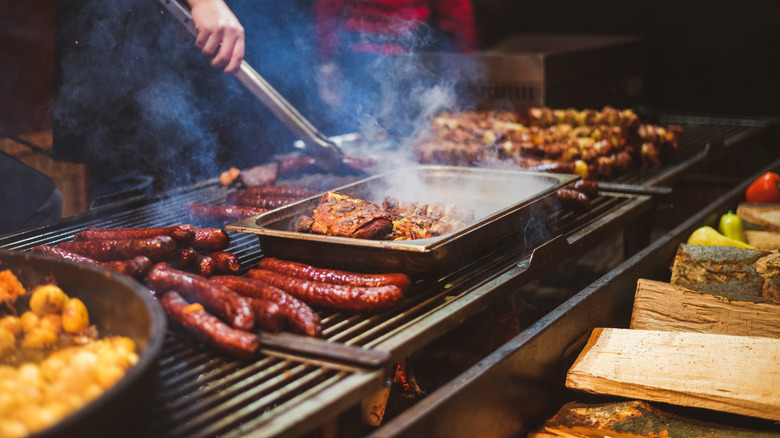When To Use Wood Vs. Charcoal: A Grilling Expert Weighs In
Grilling presents you with an abundance of choices, going well beyond which cut of meat to throw on the flames. And while that typically involves deciding whether to use gas or charcoal, if you love deep, smoky flavors, there's another choice to make: charcoal or wood. While charcoal has been the backyard go-to for years, grilling with wood has a certain rustic charm, and also some real advantages in terms of flavor and temperature. However, those undeniable appeals don't mean you should be taking an ax to the nearest tree, as both options have situations where they might work better. To get to the bottom of the charcoal vs. wood debate, Tasting Table reached out to grilling expert and chef Brad Wise, owner of Trust Restaurant Group and executive chef of Rare Society, a California-based steakhouse chain.
According to Wise, the biggest difference between wood and charcoal for grilling is the ease of use, and that should inform when one is worth it over another. Wise says charcoal is more approachable and has a flavor that's already been prepped for you. "All you have to do is dump it out, light it, wait a little bit and you're good to go." Wood will give you amazing and unique flavor, but it requires a lot more handling, so you should save it for when it really makes a difference. Wise suggests grilling vegetables as the perfect time to use wood, as it will make them sweeter and less bitter than charcoal would.
Wood is more difficult than charcoal, but produces unique flavors
As chef Wise puts it, wood is basically just "charcoal in its raw state," so it requires more attention and decision-making when used for grilling. Wood needs to be moved around for airflow, and you often need multiple types of flammable items like tinder and kindling to get your fire going right. That is all a lot of work, but charcoal just can't compare to the varieties of flavor you can get out of wood. You can even pick which types suit your meal — use more delicate wood like alder or maple for seafood, or more robust mesquite and hickory for beef and pork. Wise likes to use American Red Oak on the vegetables he grills, because of its sweetness and mild taste. If those differences matter to you, or if you're cooking something more delicate that might be overpowered by charcoal, wood's extra effort might be worth it. If not, you can stick with the relative ease of charcoal.
There is one trick you should try if you are new to wood grilling, or can't make up your mind, and that's mixing the two. By using a 50/50 mix, you can get the flavor of wood while still retaining the easier control and consistent temperature of charcoal. You may not get the full campfire cooking effect, but it's a great way to test the waters and decide which method works best for your recipes.

